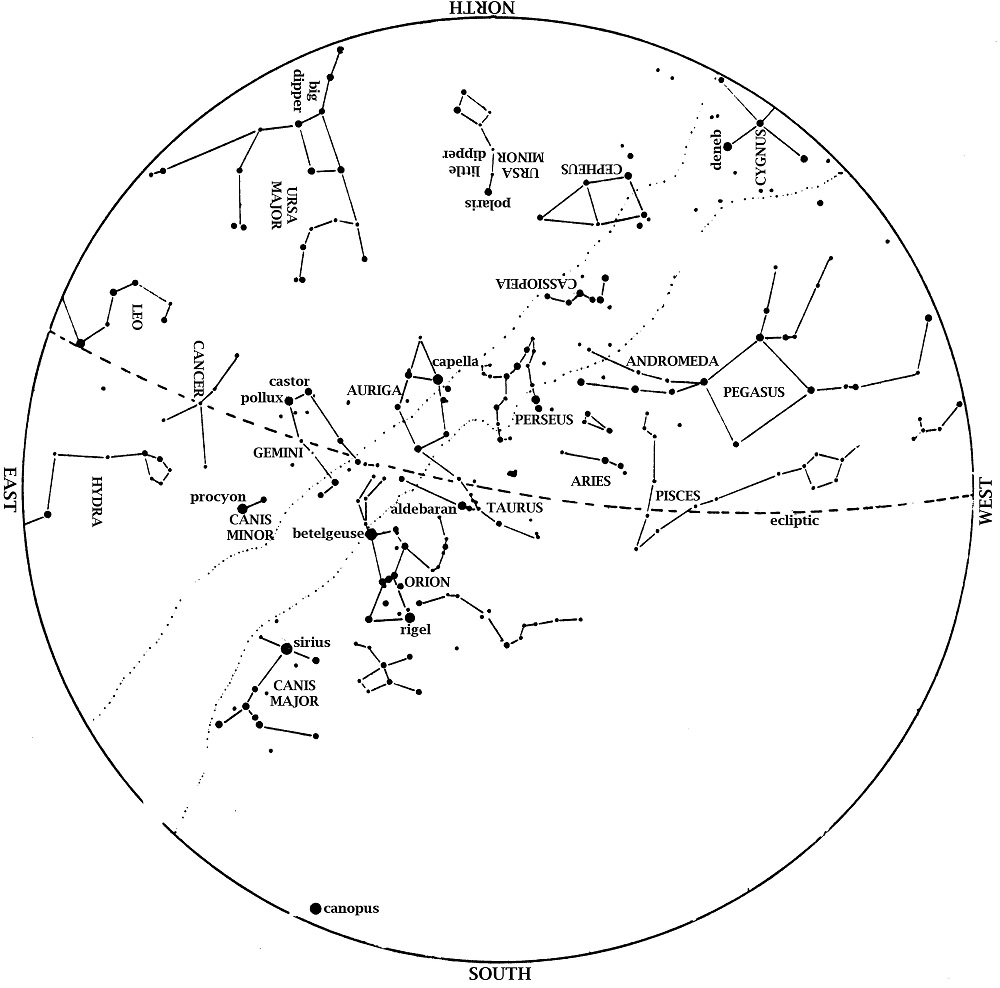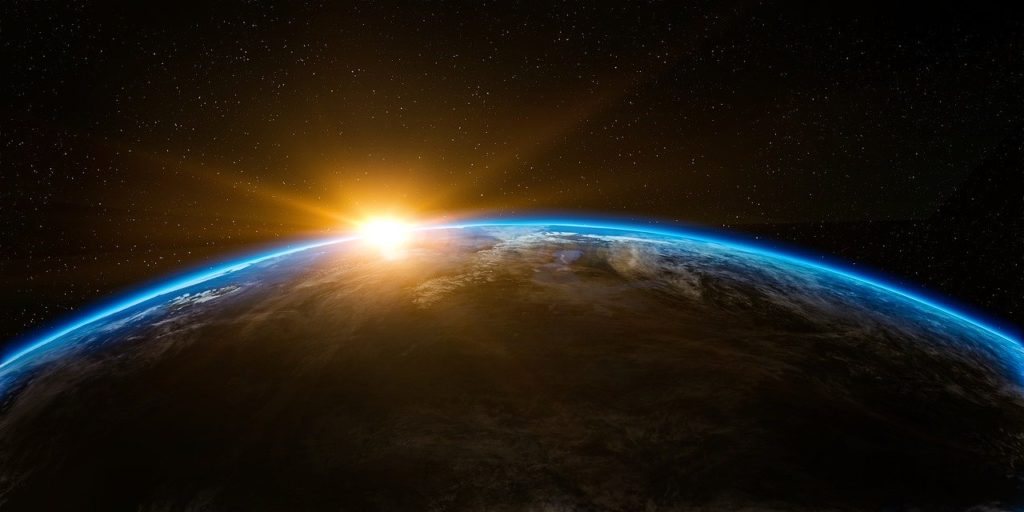
Venus is even higher in the evening sky this month. Look in the southwest at dusk for the brightest thing there.
Mars is higher in the morning sky each day this month. Look low in the east at dawn.
Jupiter begins to emerge into the morning sky this month. Look low in the southeast at dawn, especially towards the end of the month.
Saturn is behind the Sun and out of sight this month. Saturn is directly behind the Sun (at conjunction) on January 13.
Watch for the Great Square of Pegasus in the west at dusk. Taurus, the Bull is high in the south. Look for the Pleiades star cluster above reddish Aldebaran. Dazzling Orion, the Hunter takes center stage on winter evenings. Surrounding Orion are the brilliant stars of winter. Orion’s belt points down to Sirius, the Dog Star, which outshines all other stars we ever see at night. The Little Dog Star, Procyon, rises with Sirius and is level with Orion’s shoulder as they swing towards the south. To the upper left of Orion’s shoulder is Gemini, the Twins.

Moon Phases in January 2020:
1st Quarter Jan. 2, 10:45 p.m.
Full Jan. 10, 1:21 p.m.
Last Quarter Jan. 17, 7:58 a.m.
New Jan. 24, 3:42 p.m.
The New Moon of January 24 is the second New Moon after the winter solstice. Therefore, it marks Chinese New Year; the Year of the Pig ends and the Year of the Rat begins. Note that China is 14 hours ahead of us, so the New Moon occurs on January 25 there.
The Full Moon of January 10 almost enters the Earth’s shadow; it comes close enough that if you were on the Moon, you could see the Earth partially block the Sun. This is a penumbral eclipse, where the Moon gets only slightly darker, and it’s visible only in the Eastern Hemisphere. In 2020, the two solar eclipses are central (but not visible here). That means that lunar eclipses in 2020 are just penumbral eclipses like this.
At 1:48 am on Sunday, January 5, the Earth is as close to the Sun as it will ever get this year; it reaches perihelion. So why do we have cooler weather now instead of the heat of summer? That’s because Earth’s orbit is almost a perfect circle. The Earth-Sun distance varies only by about three percent, which is just not enough of a difference to make us warmer when we come closer to the Sun. The Earth’s tilt on its axis, not its changing distance from the Sun, causes the seasons.

The latest sunrise of the year (7:17 am) occurs on January 10. That’s due to the same effect I mentioned last month; Earth’s slight acceleration near perihelion makes sunrise, noon, and sunset all occur a little later each day. Most of us sleep through sunrise but are awake for sunset, so you’ve probably noticed that sunsets are significantly later than last month. However, the days aren’t really that much longer, as sunrises have been getting later as well. Although the midday Sun is a little higher in the sky now than on the solstice, the difference is still small. After mid-month, when the Sun starts taking a much more noticeably higher, longer path across the sky each day, we’ll start seeing earlier sunrises and later sunsets as days lengthen.
Clear Skies!



